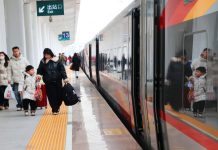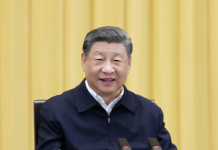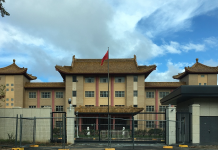
Bahram Rahimjan, a Uygur student of art, dreams big. With 17 months to go before sitting the gaokao, China’s national college entrance examination, he said his dream school is the prestigious Central Academy of Fine Arts in Beijing, more than 3,000 km from his hometown.
“Painting makes me happy,” he said while honing his skills at his school in Cocodala, Xinjiang Uygur Autonomous Region in northwest China. He said he is interested in rediscovering Uygur culture through artistic creation.
On the Cocodala Zhenjiang Senior High School’s well-equipped campus, students are encouraged and inspired to be their best. Apart from academic studies, extracurricular programs ranging from art to 3D printing are available for them to identify areas in which their strengths lie.
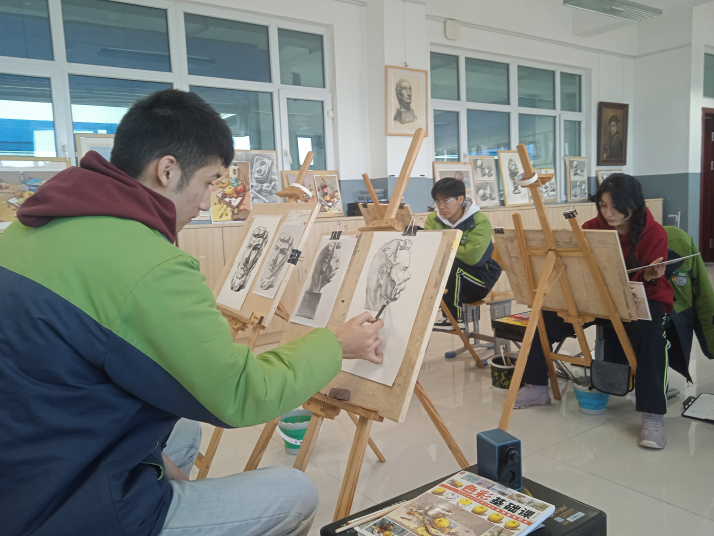
Partners for progress
But it’s not just the premium facilities that make the school stand out. Experienced teachers from Zhenjiang, a city in the eastern province of Jiangsu, work there for 1.5 years at a time as part of a Xinjiang assistance program.
Under the program, first launched in 1997 to leverage resources from more developed regions to rev up Xinjiang’s development, 19 provinces and municipalities directly under the administration of the Central Government are partnered with Xinjiang’s prefectures as well as divisions of the Xinjiang Production and Construction Corps (XPCC).
In October 1954, the Central Government decided to demobilize some of the troops stationed in Xinjiang. These former service people became the first generation of XPCC members, who were tasked with engaging in agriculture, industry and other economic activities while helping guard the border areas.
The XPCC has since evolved into a unique organization with a population of 3.6 million under the dual leadership of the Central Government and Xinjiang Uygur Autonomous Region. It now has 14 divisions and administers 12 cities.
Jiangsu, for instance, is the partner of Ili Kazak Autonomous Prefecture as well as the fourth and seventh divisions of the XPCC. Cocodala, a young city established in 2015, houses the headquarters of the XPCC Fourth Division. The name is a combination of Kazak and Mongolian words, meaning a “green field.” It is located some 25 km west of Ili’s capital city Yining.
Every year, Jiangsu earmarks funds for Xinjiang to help meet its needs in a wide range of fields such as education, medical care and infrastructure, Li Xiangyang, a Jiangsu public communication official now working in Ili, told Beijing Review.
Official figures show Jiangsu’s GDP exceeded 12 trillion yuan ($1.67 trillion) that year, accounting for roughly 10 percent of the national total. Xinjiang, with a land area 15 times that of Jiangsu, posted a GDP of 1.77 trillion yuan ($247.6 billion) in 2022. GDP matters because it gauges the size and health of an economy within a given amount of time.
The province also calls on government officials and professionals including teachers to volunteer to do temporary stints in Xinjiang. In addition, it helps Xinjiang develop industries such as tourism. For example, Jiangsu’s leading tourism brand operates a grassland resort in Ili; this winter, Jiangsu granted subsidies to attract tourists to Ili, where enthusiasm for winter tourism runs high.
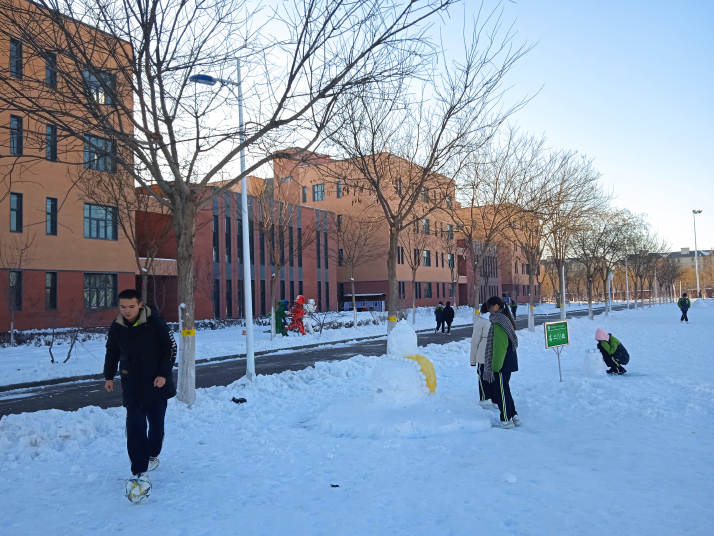
New methods
The Cocodala Zhenjiang Senior High School opened in 2018. Teachers and managerial staff from Zhenjiang share education methodologies with their local counterparts at the school, Deputy Principal Yan Longmei, who is from Zhenjiang, said.
Cui Dong, a local teacher of standard Chinese, said teachers from Zhenjiang focus more on interaction between teachers and students, rather than lecturing, to allow students to take the initiative in the learning process. Also, teachers at the school regularly hold seminars to formulate teaching plans together. All this has improved the efficiency and quality of classroom teaching.
Another innovation is the integration of different subjects, such as standard Chinese, history and political science.
Cui gave an example of a class he taught on regional ethnic autonomy, a system that the Chinese Government practices in areas with sizable ethnic minority populations. The legislature of an autonomous region has the power to enact regulations on the exercise of regional autonomy in line with local conditions.
He said the class explored the historical background for regional ethnic autonomy and helped students understand how and why it works.
Standard Chinese, China’s official language, is the working language in schools in Xinjiang. Ethnic language courses such as Uygur, Kazak and Mongolian are also available.
Ethnic minorities make up 32.7 percent of the school’s 2,500-strong student body. Yan believes the multi-ethnicity is an asset for her students: While they share a common national identity, they celebrate diverse cultures both in the classroom and at school events such as art festivals. –The Daily Mail-Beijing Review news exchange item


